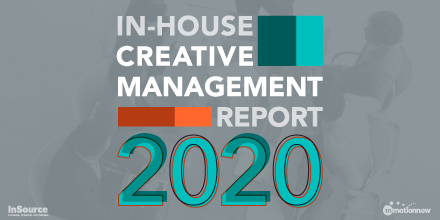Acclimating a new client to your in-house creative team can feel a bit like lifeguarding the deep end of a swimming pool: You know your client wants to splash around confidently—and quickly—but it’s up to you to make sure they have the tools to easily make it out of the shallows. Meanwhile, in today’s fast-paced industry, creative groups are tasked with producing more content than ever before (76% this year, according to a study by the Content Marketing Institute). That means giving “swimming lessons” to each new client without compromising the existing creative production process just isn’t possible. What’s the solution?
The first step to ensuring your new client onboarding process is swift, seamless, and minimally impactful to your team is to thoroughly understand how projects are executed. Documenting your workflow from beginning to end will help you easily educate a new client team member on what’s essential to their success—and make repeating the process with the next client a breeze. Here’s how.
1. Determine your project intake process.
Kicking off new projects is a pain point for a ton of marketers and creatives alike—and a lot of it comes down to lack of established process. According to a 2015 Visually Report, less than 23% of creatives think marketers do a good job of briefing projects clearly. That same report also found that only 40% of marketers think creatives do a good job of either following the creative brief or asking questions to understand it better. That means within most in-house creative and marketing partnerships, the briefing process isn’t working in either direction. If you’re preparing to onboard a new client, use the transitional period to firmly establish what exactly your project intake process is. Understand what works best for your team—and for your client team—and incorporate that feedback in to the official process. Once you have a documented system in place that works for both sides of the creative-marketing partnership, onboarding will be pain-free. Your team won’t have to worry about delaying existing projects in the pipeline due to a slow acclimation period. And your new client will feel fully-equipped to begin the intake process for new projects of their own in no time.
2. Document your workflow.
If you don’t currently have clear documentation of how your team produces creative from beginning to end, don’t worry—you’re not alone. The 2015 In-House Creative Services Industry Report found that only 43% of in-house creative teams document all of their workflow processes. It’s easy to get sucked in to the daily, weekly, and monthly grind of launching and executing projects, without ever stopping to record exactly how all of the work gets done. But taking a brief pause to document your team’s process will not only give you educational material for a new client—it will also give you the valuable opportunity to hone in on inefficiencies. An automated workflow solution can help you avoid the pain of manually outlining your team’s workflow by showing you each step of the project intake, review, and approval processes.
3. Establish project benchmarks.
Despite an ever-increasing demand for content, many internal creative teams feel like they lack a clear understanding of how much time and effort different types of projects take. In fact, 52% of in-house creative teams say resourcing is their biggest challenge, according to the 2015 In-House Creative Services Industry Report. The reality is, without intentional documentation of how much effort various projects cost, it’s hard for most creative teams to accurately ballpark resources. And manually recording what’s spent on different projects can be a huge time-suck, especially when your team is faced with a huge volume of projects in a variety of different forms. An automated workflow solution can take the pain out resource tracking by automatically recording the effort your team is putting in to various projects, providing metrics on different stages of work, and overviewing your workflow from beginning to end. Time and resource benchmarks are essential pieces of information for a new client. Prioritize establishing them as you develop your onboarding process, and you’ll guarantee a seamless transition for all future clients.
Want to learn more about documenting your workflow to create an easy client onboarding process? Check out tips, tricks, and best practices from the workflow experts at inmotionnow.com.
How A Consulting Mindset Will Take Your Department From Order-Takers To Creative Problem-Solving Rock-Stars!
I've written about some lessons learned while working in-house that made me a better consultant and business owner. Now, I'm turning the tables and following up with some ideas for what I think helped shape my success when I was an in-house, corporate, creative. I...





